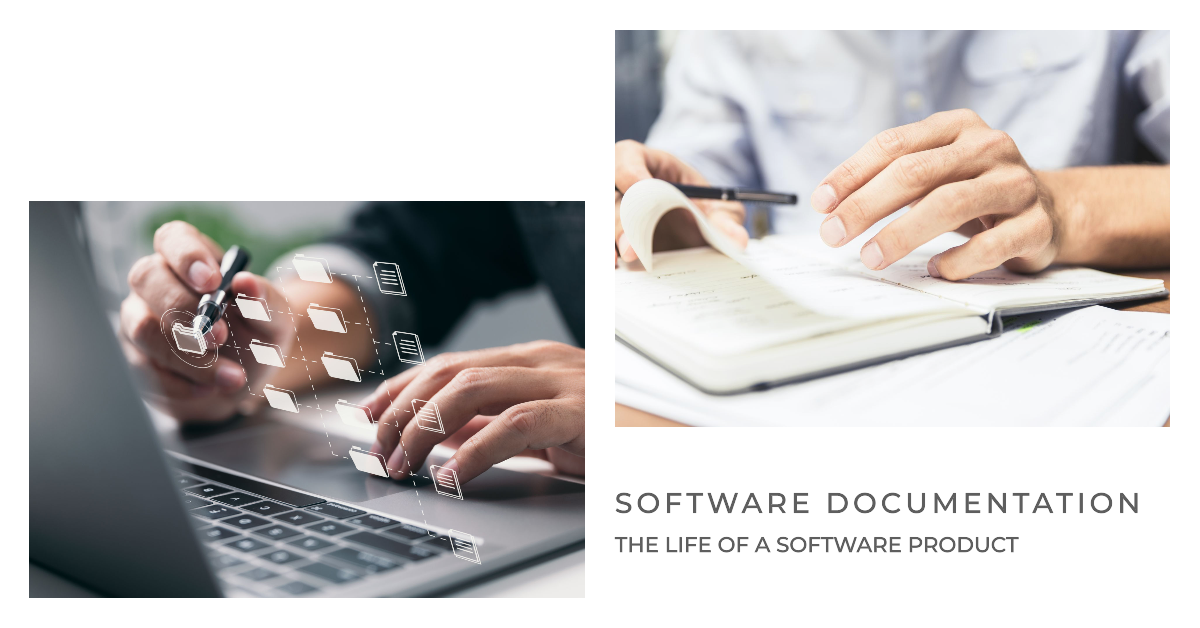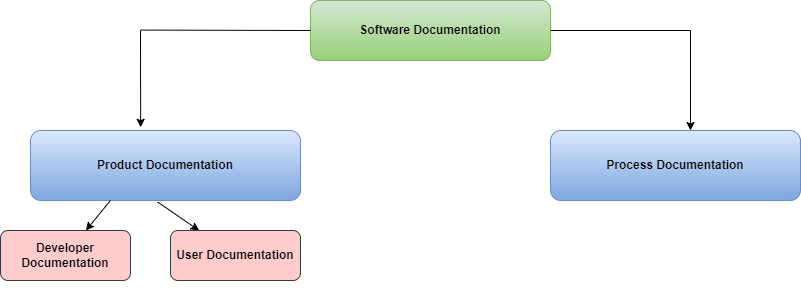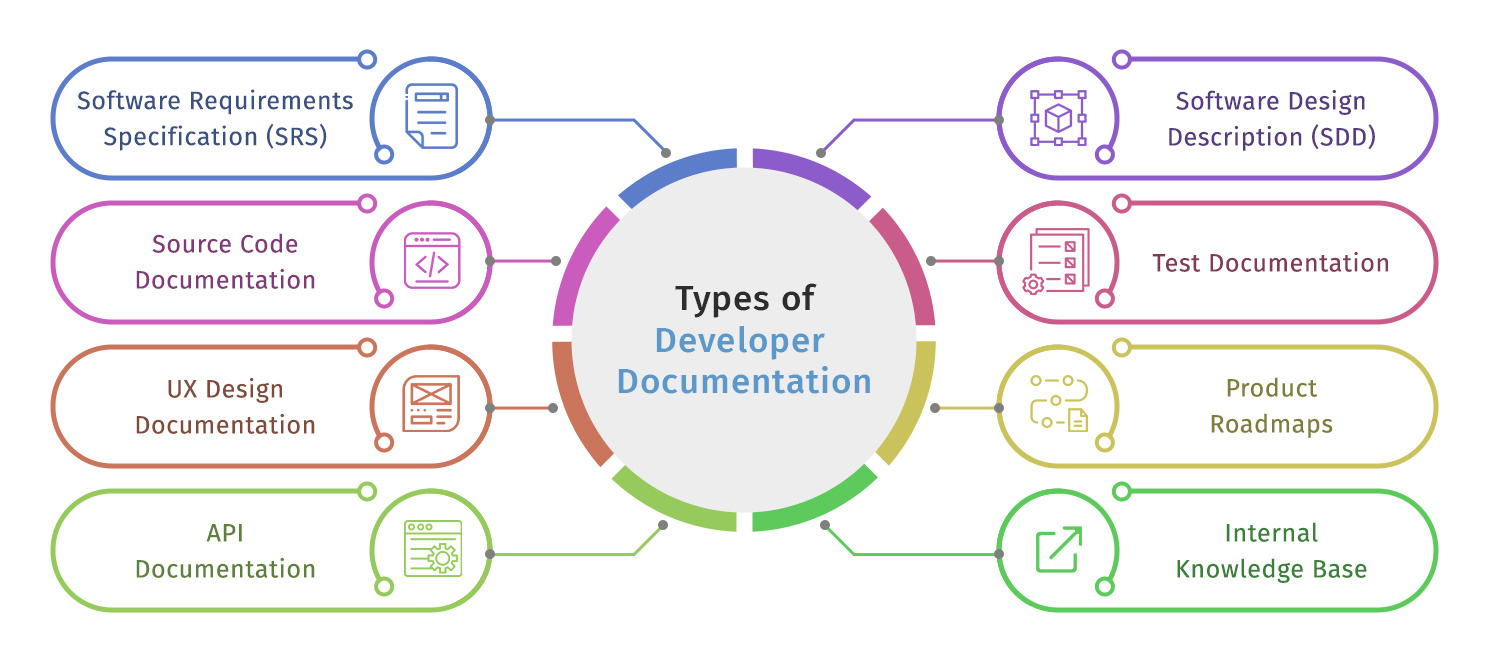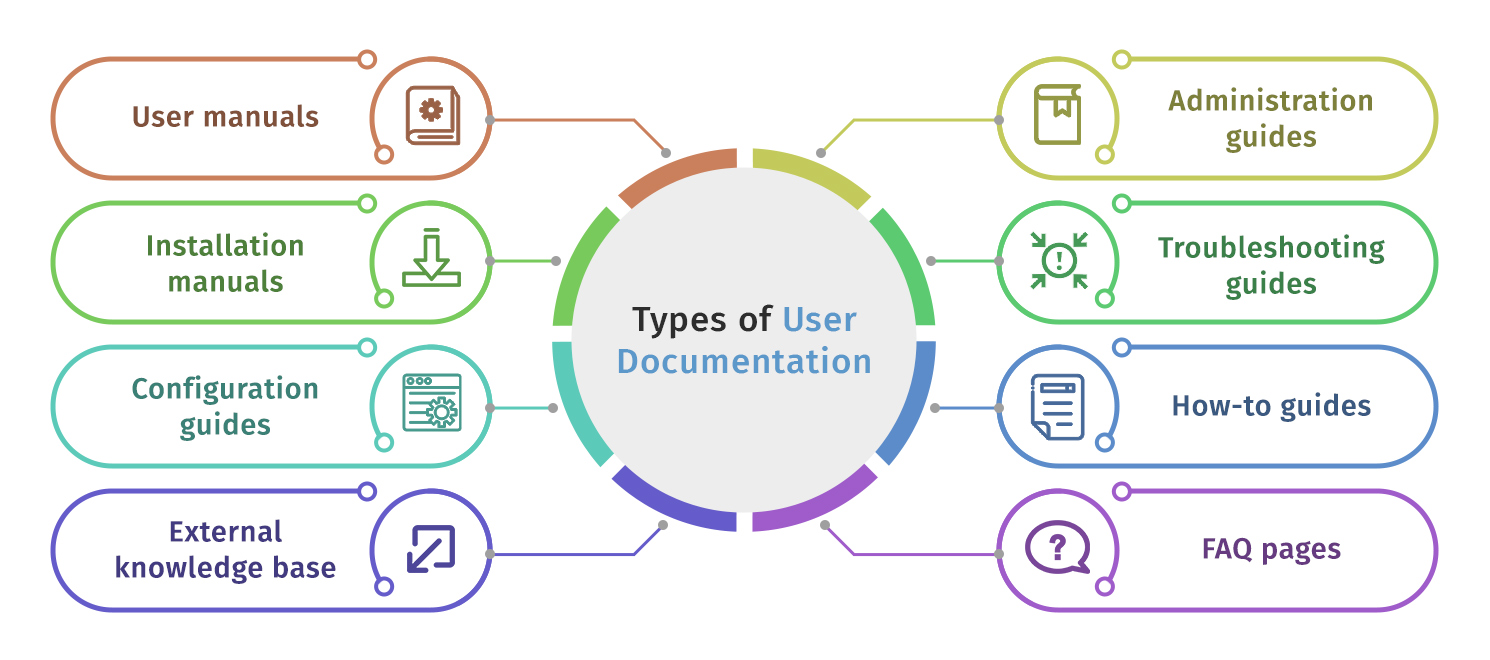Software Documentation: The Life of a Software Product
 Opeyemi Odejimi
Opeyemi Odejimi
What is Software Documentation?
The importance of documentation before, during and after software product development can not be over-emphasised. Various forms of documents are created during the software development lifecycle (SDLC) The purpose of these documents is to help the numerous stakeholders involved understand the product functionality, and requirements, identify whether the desired architectural and design goals have been met etc.
Software documentation generally describes all forms of technical document related to a software product written for the following reasons:
To help developers document the software development process
To help end-users understand how to use the software.
Types of Software Documentation

Fig 1: An image showing the different types of Software documentation
To ensure developers and the other stakeholders are in sync during the development process, all must imbibe the culture of effective documentation. Various types of documentation exist before, during and after the development process to achieve this goal. These documents can be classified into two major groups namely:
Product documentation: This type of documentation contains general information about the product or software and its functions, guidelines on how to use the software etc. Product documentation is further divided into two groups namely: Developer documentation and User documentation. Some of these types of documents involve API documentation, software requirements specification, user guide, test documentation, source code documentation, UX design documentation, Troubleshooting guides, How-To guides etc**.**
Process documentation: Product documentation, as the name suggests is a collection of documents produced during the development of the software and its maintenance. These documents are process-related and some of them include project plans, reports, meeting notes, test schedules etc.
Product Documentation
For the purpose of this article, we will focus solely on the two types of Product documentation namely; Developer documentation and User documentation.
What is developer documentation?
The developer documentation can be described as a lifeline for developers, product managers, software testers and other stakeholders as it enables them to understand the software product. This document is created during the software development process and its purpose is to document software requirements, source code, software architecture, design etc. Developer documentation is also important as it may serve as a point of reference for developers who may have to work on or update the software. It is also referred to as System documentation.
Types of Developer Documentation

Fig 2: Types of developer documentation. Image Source: technical writing HQ
Some of the various types of developer documentation created during the development process are discussed below.
Software Requirements Specification
This is a document that describes the system of the intended software. The functional and non-functional requirements of the software are laid out in this document. The SRS as it is fondly called, when used properly helps to prevent project failure as it is a thorough assessment of requirements to be met before actual designing commences.
Here is a sample of a Software requirements specification with an adequate explanation: Jelvix's Software Requirements Specification Example and Guide.
API Documentation
API is an acronym for Application Programming Language. The fu.nction of an API is to allow two systems or applications to interact with each other regardless of the programming language.
This document contains references and tutorials that help developers use and integrate your API. API documentation is usually the primary resource that explains how to use your API and how to get started. This document has answers that developers may have on the syntax, functionality, endpoints etc.
A popular example of API documentation is the Paystack API documentation.
UX Design Documentation
UX is an acronym for User Experience. User experience refers to how users interact with a product, how they feel and think about your digital product. This requires a deep understanding of the user: their needs, wants, preferences, sentiments/biases, behaviour and the context in which they will interact with your product.
The goal of UX design is to create practical, useful and usable for users. It is part of the product design, hence why it kicks off at the requirement stage and runs through the various software development stages including testing and post-release stages.
Some aspects of UX design documentation covers include user personas, user stories, user story maps, UX style guides etc.
Software Design Description
According to the Institute of Electrical and Electronics Engineers (IEEE), a software design description (SDD) is a representation of a software design to be used for recording design information, addressing the numerous design issues, and communicating that information to the necessary stakeholders. The SDD usually contains the software design and its overall architecture and it helps to ensure the project team including the developers are moving in the same direction. It also helps the stakeholders take a critical look at the design risks and ensure necessary steps are taken to mitigate such risks.
Here is an example of what an SDD looks like Software Design Description by Slideshare.
Types of User Documentation

Fig 3: Types of User documentation. Image Source: technical writing HQ
Once the software has been developed and passed the testing phase, the end-users need various documentation which will help them understand the product. These documents are essential to installing, configuring, troubleshooting and using the software product effectively. To this effect, we'll talk about some of these User documentation.
How-to Guides
How-to guides are documents that provide step-by-step instructions that help the end-user perform certain tasks such as installing the software and upgrading and activating the software.
These documents are important for users who are interacting with the software product for the first time or who are not very tech-savvy.
Here is an example of a how-to guide by Scribe on How to find a LinkedIn Username
Troubleshooting Guide
This document usually contains a list of common problems and the best procedure for solving those problems. The solutions are in step-by-step format and they reduce time and resources that would have been spent to solve issues as the end-users get to solve problems themselves.
Configuration Guide
Most of the software products abducted by big companies are usually complex to use. A configuration guide contains the necessary pieces of information that will assist system administrators or individuals in configuring the system appropriately.
Here is a sample of a configuration guide: Configure the AWS CLI
FAQ Page
An FAQ page, an acronym for Frequently Asked Questions, contains questions that have been asked frequently or that are expected to be asked by users at some point. FAQs ideally cover subjects that do not require too much technical detail, usually one or two paragraphs are enough to cover topics that belong in FAQs.
For more in-depth details on the various types of product documentation not covered in this article, visit Technical Documentation in Software Development
Advantages of Software Documentation
The importance of software documentation is numerous. In this section, we will look at some of them.
Developer Documentation Advantages
Some of the advantages of Developer documentation are mentioned below
It ensures knowledge sharing among stakeholders.
It ensures related information is centralized.
It improves future projects.
User Documentation Advantages
Some of the advantages of User documentation are listed below
It reduces support costs.
It helps resolve common problems with the software product.
It ensures that end-users or customers are satisfied with the product.
It helps drive sales.
Software Documentation Tools
Software documentation tools help to streamline the process of creating and managing documents. These tools present the developer or whoever is creating the documentation with many features some of which include the ability to publish, manage and distribute documentation internally or with external teams.
Advantages of Software Documentation Tools
Documentation tools present numerous benefits for software developers, technical writers etc. some of which are discussed below.
Version Control: Some software documentation tools support version control. Version control is a system that allows the managing of various or multiple versions of the same document by tracking the creation of the document and the changes made to it over time.
Free templates: Some of these software documentation tools come with ready-made templates for development. This simplifies the document creation process.
Third-party Integration: Some documentation tools support the use of third-party tools like Google Workspace, GitHub etc.
Disaster Recovery: Software documentation tools allow the automatic backup of important documents. In the advent of data loss, such documents can be retrieved from a Disaster recovery site or the cloud.
Software Documentation best practices
To create quality, efficient and reliable documentation, the following habits are a must;
Think like your audience and write for them.
Maintain and keep documentation up-to-date.
Include Glossaries.
Always ensure you document during the development process.
Develop adequate documentation for your products.
Conclusion
Software documentation gives life to a Software product as it helps developers build better software while ensuring the software is usable for the end-user.
The processes involved in creating software documentation is a complex one, this is so because this documentation is created for diverse audiences and also requires inputs and contributions from the various stakeholders involved in the software development lifecycle.
To mitigate these complexities, Software development tools are integrated in the document development process. The various practices highlighted in the article should be adhered to so as to create quality, efficient and reliable documents.
Subscribe to my newsletter
Read articles from Opeyemi Odejimi directly inside your inbox. Subscribe to the newsletter, and don't miss out.
Written by

Opeyemi Odejimi
Opeyemi Odejimi
I am a Technical Writer with a knack for creating concise and easy-to-understand contents for the end user.